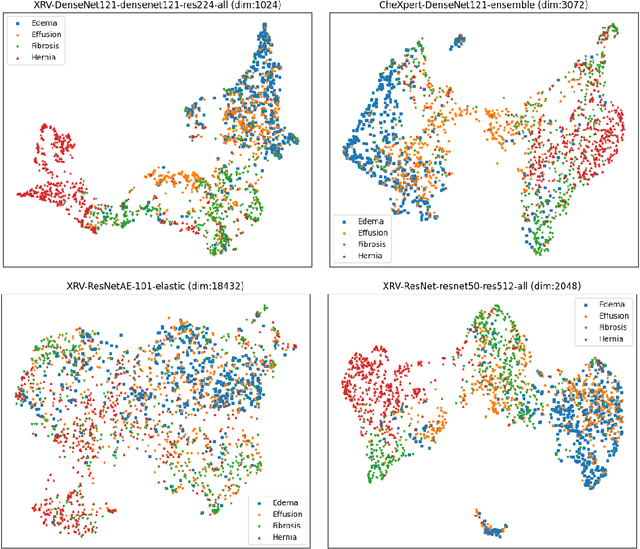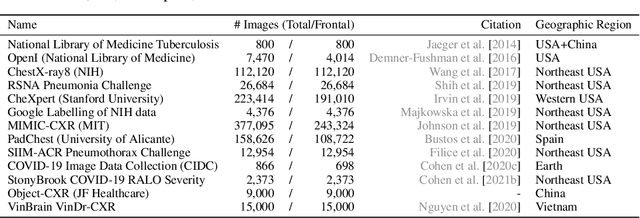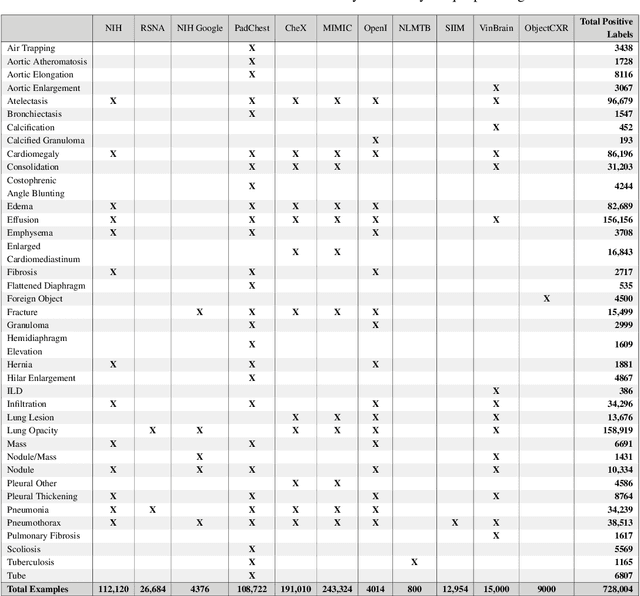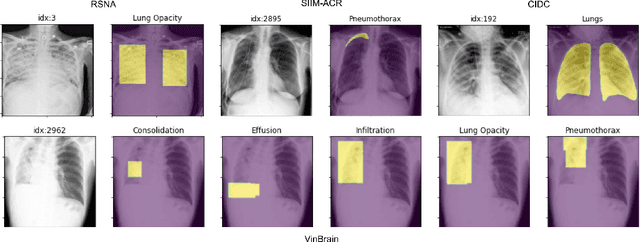Paul Morrison
TorchXRayVision: A library of chest X-ray datasets and models
Oct 31, 2021



Abstract:TorchXRayVision is an open source software library for working with chest X-ray datasets and deep learning models. It provides a common interface and common pre-processing chain for a wide set of publicly available chest X-ray datasets. In addition, a number of classification and representation learning models with different architectures, trained on different data combinations, are available through the library to serve as baselines or feature extractors.
COVID-19 Image Data Collection: Prospective Predictions Are the Future
Jun 22, 2020



Abstract:Across the world's coronavirus disease 2019 (COVID-19) hot spots, the need to streamline patient diagnosis and management has become more pressing than ever. As one of the main imaging tools, chest X-rays (CXRs) are common, fast, non-invasive, relatively cheap, and potentially bedside to monitor the progression of the disease. This paper describes the first public COVID-19 image data collection as well as a preliminary exploration of possible use cases for the data. This dataset currently contains hundreds of frontal view X-rays and is the largest public resource for COVID-19 image and prognostic data, making it a necessary resource to develop and evaluate tools to aid in the treatment of COVID-19. It was manually aggregated from publication figures as well as various web based repositories into a machine learning (ML) friendly format with accompanying dataloader code. We collected frontal and lateral view imagery and metadata such as the time since first symptoms, intensive care unit (ICU) status, survival status, intubation status, or hospital location. We present multiple possible use cases for the data such as predicting the need for the ICU, predicting patient survival, and understanding a patient's trajectory during treatment. Data can be accessed here: https://github.com/ieee8023/covid-chestxray-dataset
Predicting COVID-19 Pneumonia Severity on Chest X-ray with Deep Learning
Jun 06, 2020



Abstract:The need to streamline patient management for COVID-19 has become more pressing than ever. Chest X-rays provide a non-invasive (potentially bedside) tool to monitor the progression of the disease. In this study, we present a severity score prediction model for COVID-19 pneumonia for frontal chest X-ray images. Such a tool can gauge severity of COVID-19 lung infections (and pneumonia in general) that can be used for escalation or de-escalation of care as well as monitoring treatment efficacy, especially in the ICU. Images from a public COVID-19 database were scored retrospectively by three blinded experts in terms of the extent of lung involvement as well as the degree of opacity. A neural network model that was pre-trained on large (non-COVID-19) chest X-ray datasets is used to construct features for COVID-19 images which are predictive for our task. This study finds that training a regression model on a subset of the outputs from an this pre-trained chest X-ray model predicts our geographic extent score (range 0-8) with 1.14 mean absolute error (MAE) and our lung opacity score (range 0-6) with 0.78 MAE. All code, labels, and data are made available at https://github.com/mlmed/torchxrayvision and https://github.com/ieee8023/covid-chestxray-dataset
COVID-19 Image Data Collection
Mar 25, 2020



Abstract:This paper describes the initial COVID-19 open image data collection. It was created by assembling medical images from websites and publications and currently contains 123 frontal view X-rays.
 Add to Chrome
Add to Chrome Add to Firefox
Add to Firefox Add to Edge
Add to Edge